I feel as if I have been walking in the Garden of Eden this spring, and the flowers are still coming!
This month I will indulge myself and highlight some favourite plants! Firstly a plant that is only found on some drier ridges in our district, the inaptly named ‘Common’ Fringe-myrtle Calytrix tetragona. The pale-pink, bunched, starry flowers are just gorgeous and well worth making a special effort to find.

Common Fringe-myrtle
An extremely rare and showy plant, Feather-heads Ptilotus macrocephalus is only known to be growing in one small clearing near the Anglesea Water Reclamation Plant. I counted 4 plants this year, however it was good to see that one plant had over a dozen flower heads. In a previous drought year I counted 25 plants.

Feather-heads at an early stage
The feathery plumes were just developing when writing this, and I look forward to seeing them in their full glory.

Feather-heads
Nearby I found numerous yellow flowers of the delightful Button Everlasting Helichrysum scorpioides standing out in the low heath. These are also single-stalked plants, and I am always fascinated by the multitude of tiny florets crammed tightly into the large, flat flower-heads.
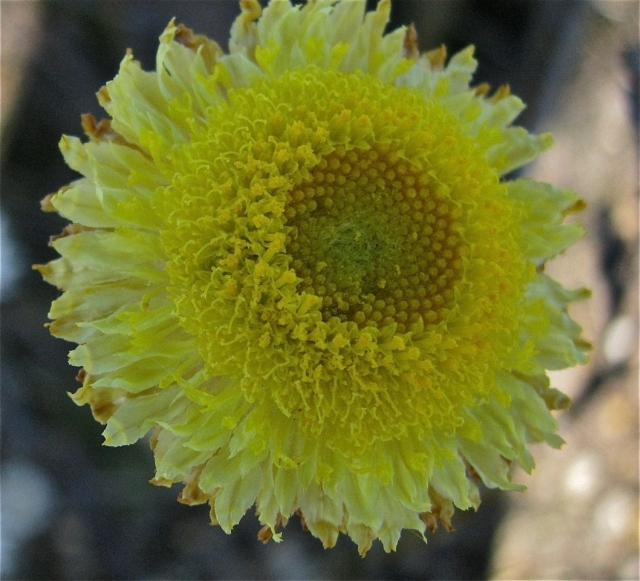
Button Everlasting
I had decided that this year I wasn’t going to write about Blue Pincushion Brunonia australis which I always do in November. However I have seen so many plants in bud that I anticipate a particularly spectacular showing. The single bright-blue, circular, flower-heads or ‘pincushions’ have narrow, soft, spoon-shaped pale-green leaves forming a rosette at the base of the stems.
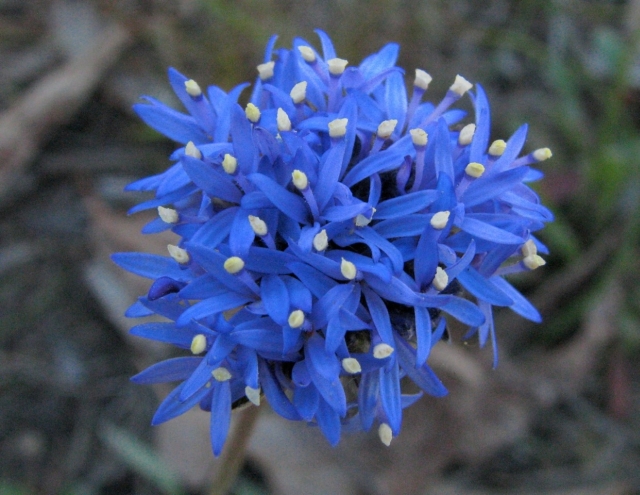
Blue Pincushion
At this time of year I am sometimes reminded of the words from Luke 12:27 about the beauty of lilies: “Even Solomon in all his glory was not arrayed like one of these.” We have a number of delightful lilies which are starring this month.
Milkmaids Burchardia umbellatum have been growing in massed displays. Each erect stem bears a cluster of white sweet-scented flowers in an umbrella-like formation. Look out for the brown seed capsules that will soon develop as they age.

Milkmaids
Similarly abundant is everyone’s favourite, Chocolate Lily Arthropodium strictum. The beautiful flowers have three large petals with frilled margins, three smaller sepals, and six, rich deep blue/purple stamens.
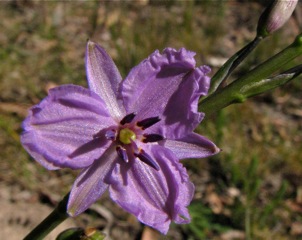
Chocolate Lily
The varieties of Black-anthered Flax-lily Dianellas are always a delight, with their dangling rich blue star-shaped flowers with distinctive bright yellow bases to the stamens. The stem-lengths vary according to the species. Their large tufts of long, narrow leaves are distinctive, with marked central veins

Black-anthered Flax-lilly
Look out for the uncommon Bulbine Lily Bulbine aff. glauca, a showy lily with the bright yellow flowers gradually opening up the stem. A sure place to find them is the Allen Noble Sanctuary where they have been planted by the shire.
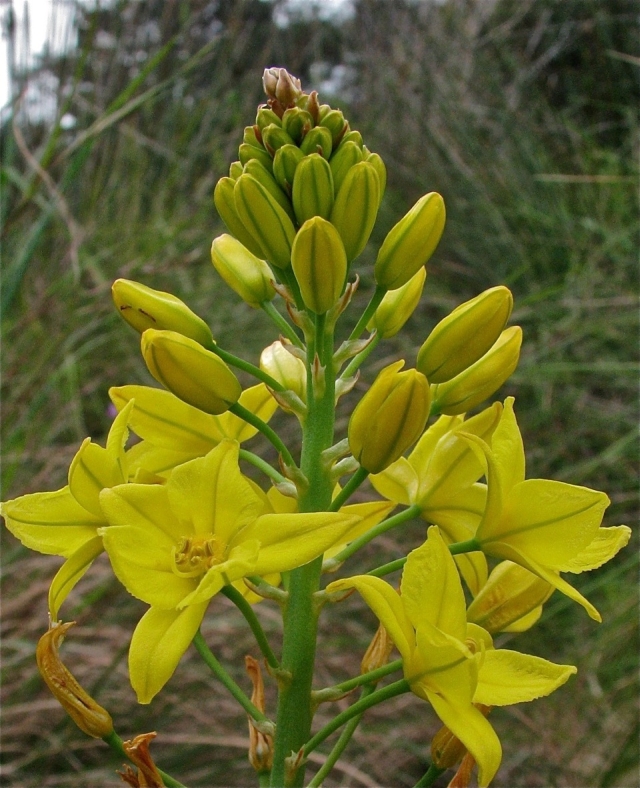
Bulbine Lily
Two Iris’s which are also a really gorgeous feature of late spring, are the Short and Long Purple-flag Patersonia fragilis and occidentalis. They have deep mauve three-petalled flowers growing in the midst of clumps of long, flat leaves.
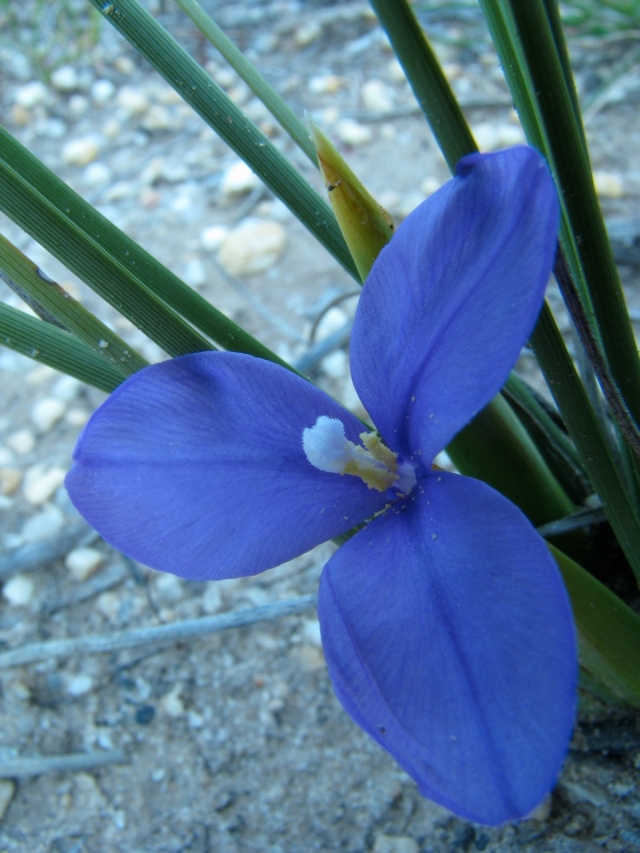
Short Purple-flag
Finally the sensory plant of the month is my least favourite plant Hedge Wattle Acacia paradoxa. I have discovered that the nasty prickly foliage (great for sheltering birds) is currently being balanced by hairy, soft and silky curling seed pods…what a contrast in texture! Wattles seem to be especially blessed with a wonderful range of seed pod styles.
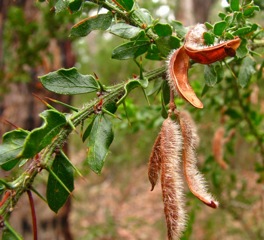
Hedge Wattle
Also new for me was sighting small weirdly-shaped seed pods developing on the Sundews Droseras.


Drosera seeds
Remember to carry ‘Flowers of Anglesea and Aireys Inlet’ on your walks… and enjoy!
Ellinor Campbell